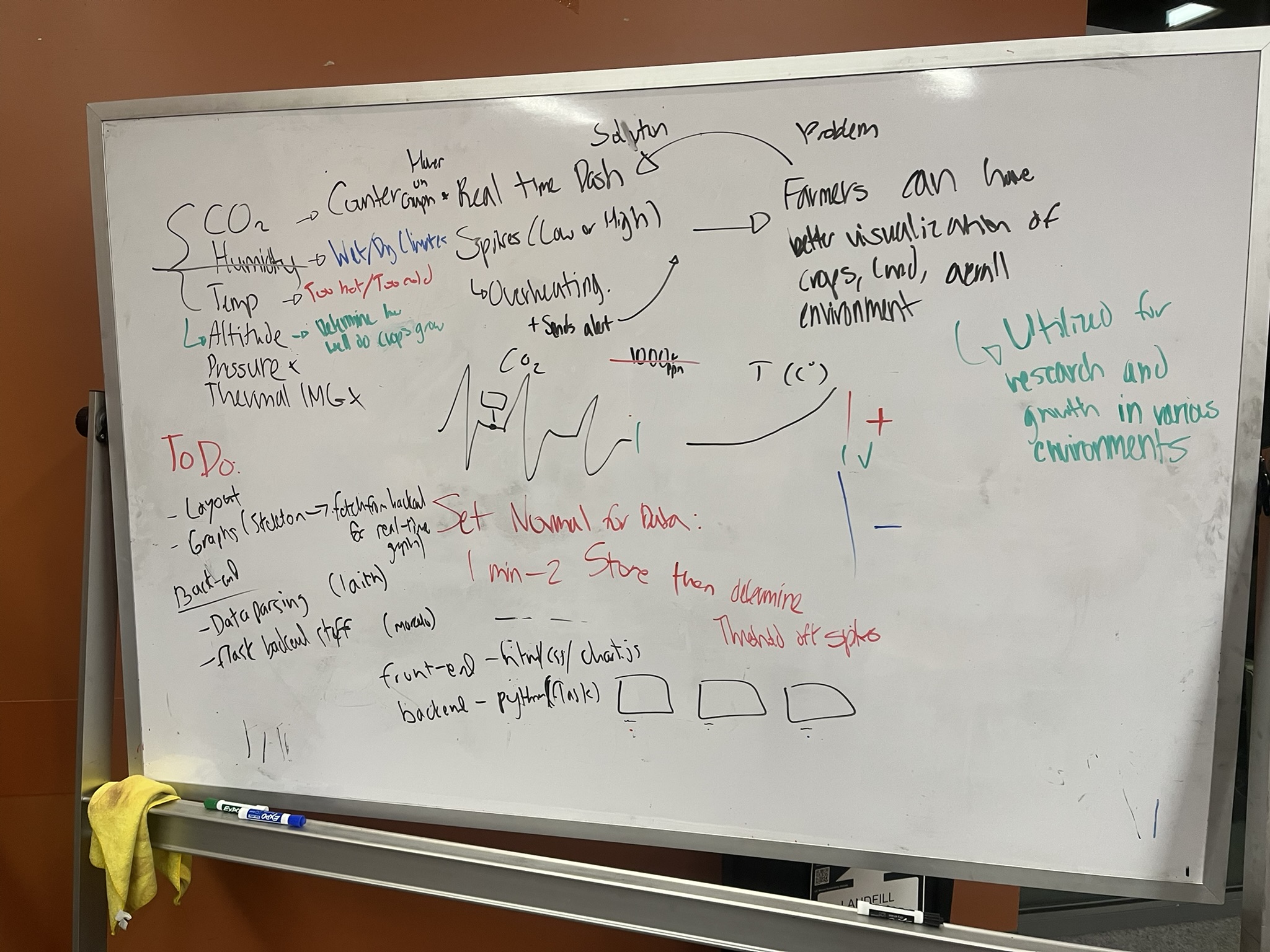This past weekend, I participated in the IoT4Ag 24-hour Hackathon which is a challenge hosted by a research team focused on applying Internet of Things technologies to agriculture. Unlike typical student-led hackathons, this one was organized by PhD researchers and industry mentors, which meant that there was a bigger focus on real engineering and long-term impact.
You can check out the full code and structure on GitHub
My team chose the Remote Sensing Station challenge. Our goal: build a full-stack wireless microclimate monitoring system that could collect environmental data, transmit it over LoRa, and display it on a real-time dashboard.
Our Architecture

Whiteboard sketch from our early planning phase. It helped us define how each part of the system would connect — from sensor to socket.
1. Simulation Pipeline (Backend Setup)
- We simulated a sensor station using a Docker container streaming Protobuf-encoded TCP packets.
-
I wrote a Python backend to:
- Read TCP packets
- Deserialize them using
sensor_pb2 - Log the parsed sensor data
- Expose it via a Flask API at
/api/data
- We validated this fully using mock packets and confirmed the backend worked end-to-end.
2. Frontend Dashboard
- Our frontend team built a live dashboard using Chart.js and vanilla HTML/CSS.
- We set up charts for CO2, temperature, and altitude — using mock data initially, but structured to support API data.
3. LoRa Integration (Hardware Phase)
- I programmed an Arduino MKR WAN 1310 with a LoRa antenna to receive data wirelessly.
- The sensor station consisted of a Teensy USB development board + sensors (CO2, temperature, thermal camera, etc.).
- The Teensy serialized sensor data using protocol buffers (Protobuf) and transmitted it via LoRa to the MKR device.
- On my laptop, I used PySerial to read raw bytes from the LoRa receiver and decode them using the same protobuf logic as the simulation.
- We successfully received full sensor packets via LoRa, but didn't have time to fully integrate the frontend with the real data feed.
Business Impact Over Demos
One thing I learned during this hackathon: in real-world engineering, business value matters just as much as the technical implementation.
We pitched our project not as a neat demo, but as a scalable agricultural tool. Possible use cases:
- Off-grid sensor deployments using LoRa (no Wi-Fi required)
- Scalable infrastructure across large farms
- Anomaly detection for crop health
- Farmer-friendly dashboards for field monitoring
One judge noted that LoRa is already transforming ag-tech because of its low power and maintenance costs — our project aligned well with that vision.
My Takeaways
- Protocol Buffers are fantastic for bandwidth efficiency, but a pain to debug live.
- LoRa is powerful, but careful design is needed for chunking and decoding incoming packets
- The best hackathon projects don't just show off — they tell a story. That story matters.
Even though we didn’t finish frontend-hardware integration, I’m really proud of how far we pushed in 24 hours and how much we learned. Huge props to the IoT4Ag team for hosting something that actually felt like a meaningful sprint, not just a hackathon.